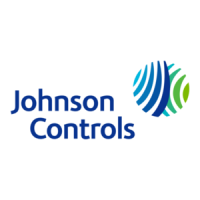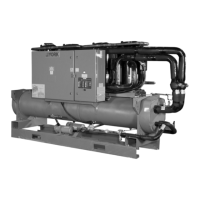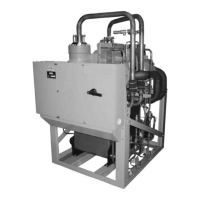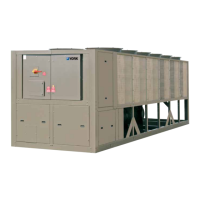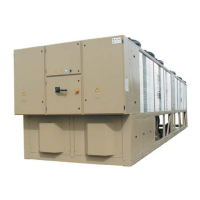JOHNSON CONTROLS
92
FORM 150.62-NM6 (103)
to change the value. After the value is changed, the
ENTER/ADV key must be pressed to enter the data into
memory. Table 27 shows the programmable limits and
default values for each operating parameter.
Following are the displays for the programmable values
in the order they appear:
DISCHARGE PRESSURE CUTOUT is the discharge
pressure at which the system will shutdown as monitored
by the optional discharge transducer. This is a software
shutdown that acts as a backup for the mechanical high
pressure switch located in the refrigerant circuit. The
system can restart when the discharge pressure drops
40 PSIG (2.76 BARG) below the cutout point.
If the optional discharge pressure transducer is not
installed, this programmable safety would not apply. It
should be noted that every system has a mechanical
high pressure cutout that protects against excessive
high discharge pressure regardless of whether or not
the optional discharge pressure is installed.
The SUCTION PRESSURE CUTOUT protects the chiller
from an evaporator freeze-up. If the suction pressure drops
below the cutout point, the system will shut down.
There are some exceptions when the
suction pressure is permitted to tem-
porarily drop below the cutout point.
Details are explained under the topic
of SYSTEM SAFETIES.
The LOW AMBIENT TEMP CUTOUT allows the user
to select the chiller outside ambient temperature cutout
point. If the ambient falls below this point, the chiller will
shut down. Restart can occur when temperature rises
2°F (1.11°C) above the cutout setpoint.
The LEAVING LIQUID TEMP CUTOUT protects the
chiller from an evaporator freeze-up. Anytime the leav-
ing chilled liquid temperature drops to the cutout point,
the chiller shuts down. Restart will be permitted when
the leaving chilled liquid temperature rises 2°F (1.11°C)
above the cutout setpoint.
When water cooling mode is programmed (OPTIONS
key), the value is xed at 36.0°F (2.22°C) and cannot
be changed. Glycol cooling mode can be programmed
to values listed in Table 20.
The programmable anti-recycle timer assures that sys-
tems do not cycle. This timer is programmable under the
PROGRAM key between 300 - 600 seconds. Whenever
possible, to reduce cycling and motor heating, the anti-
recycle timer should be adjusted as high as possible.
The programmable anti-recycle timer starts the timer
when the rst compressor in a system starts. The timer
begins to count down. If all the compressors in the cir-
cuit cycle off, a compressor within the circuit will not be
permitted to start until the anti-recycle timer has timed
out. If the lead system has run for less than 5 minutes,
3 times in a row, the anti-recycle timer will be extended
to 10 minutes maximum.
The Fan Control On-Pressure is the programmed pressure
value that is used to stage the condenser fans on, in rela-
tion to discharge pressure. Refer to Condenser Fan Control
in the UNIT OPERATION section and Tables 27 - 33.
The microprocessor will not allow pro-
gramming the “FAN CONTROL ON
PRESSURE” minus the “FAN CON-
TROL DIFFERENTIAL OFF PRES-
SURE” below 160PSIG. This assures
discharge pressure does not drop too
low.
The Fan Differential Off Pressure is the programmed
differential pressure value that is used to stage the con-
denser fans off, in relation to discharge pressure. Refer
to Condenser Fan Control in the UNIT OPERATION
section and Tables 27 - 33.
The microprocessor will not allow program-
ming the “FAN CONTROL ON PRES-
SURE” minus the “FAN CONTROL
DIFFERENTIAL OFF PRESSURE”
below 160 PSIG. This assures discharge
pressure does not drop too low.
L O W A M B I E N T T E M P
C U T O U T = 2 5 . 0 ° F
L E A V I N G L I Q U I D T E M P
C U T O U T = 3 6 . 0 ° F
S U C T I O N P R E S S U R E
C U T O U T = 4 4 . 0 P S I G
A N T I R E C Y C L E T I M E R
= 6 0 0 S E C
F A N C O N T R O L O N
P R E S S U R E = X X X P S I G
F A N D I F F E R E N T I A L O F F
P R E S S U R E = X X X P S I G
d D I S C H A R G E P R E S S U R E
C U T O U T = 3 9 5 P S I G
Unit Controls
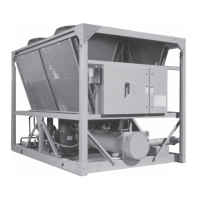
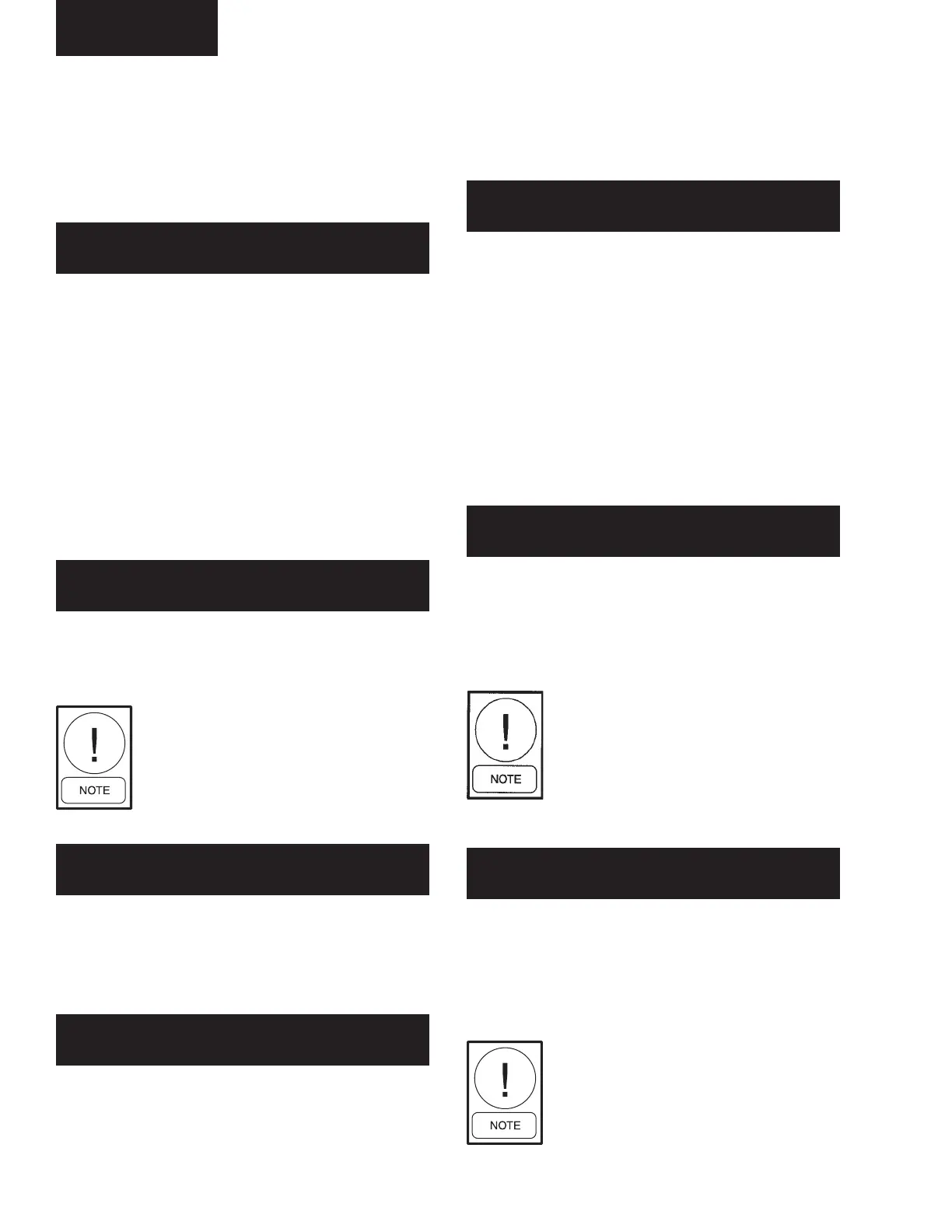